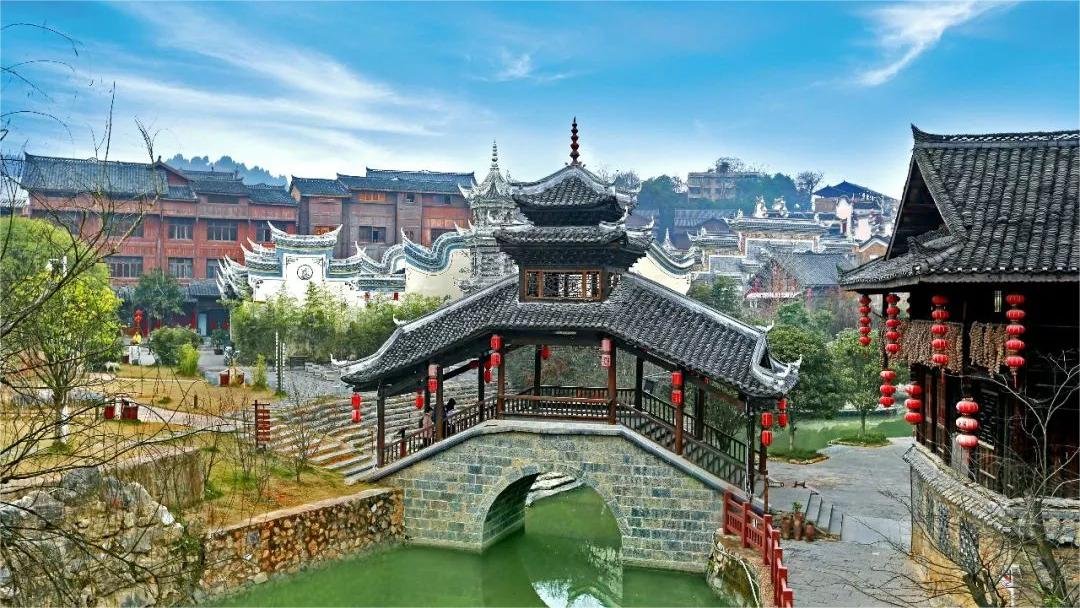Xiasi Ancient Town (下司古镇), nestled along the banks of the Qingshui River, seamlessly blends the beauty of natural landscapes, rich historical and cultural heritage, and the vibrant ethnic charm of various communities. Once a crucial stop on the ancient Tea Horse Road, Xiasi has preserved its unique charm with a distinctive water town ambiance, characterized by ancient docks that harken back to its trading post days.
Home to a permanent population of 35,000 residents, the town primarily hosts ethnic minorities such as Miao, Mulao, and She. Architecturally, Xiasi is a harmonious fusion of Jiangnan courtyard styles, Anhui-architecture, Minnan buildings, and Miao-Dong structures, creating a captivating and distinctive atmosphere.
Renowned as the birthplace of Chinese red garlic and the region where zinc-selenium rice flourishes, Xiasi Ancient Town is also recognized globally as the premier destination for white-water kayaking, offering enthusiasts a thrilling experience amid breathtaking scenery.
During the mid-July of the lunar calendar, Xiasi comes alive with traditional festivities like dragon boat races and bullfighting competitions. The town transforms into a bustling hub, drawing crowds to witness the excitement and participate in the lively celebrations. Additionally, Xiasi boasts numerous historical and cultural landmarks, including scenic spots like Taoyuan Island, Moon Island, and Ziwei Island, making it a multifaceted destination for tourism and leisure.
Table of Contents
- Basic Information
- Location and Transportation
- Map of Xiasi Ancient Town
- Highlights of Xiasi Ancient Town
- Vlog about Xiasi Ancient Town
- Other Attractions in Kaili
Basic Information
| Estimated Length of Tour | Half a day |
| Ticket Price | 90 RMB |
| Opening Hours | 8.30 – 22.30 |
| Telephone Number | 0086-0855-2212666 |
Location and Transportation
Nestled along the upper reaches of the Qingshui River, Xiasi Ancient Town is situated in the southwestern part of Kaili City, Qiandongnan Prefecture, in Guizhou Province. Positioned just 10 kilometers away from the Kaili South Railway Station and the Kaili South Station Bus Terminal, this historical gem is easily accessible.
To get there, tourists can take a high-speed train to Kaili South Station (凯里南站), transfer to bus 302, and disembark at Xiasi Copper Drum Folk Garden. The ancient town is just 15-minute walk away. Or you can also take a taxi after getting out of the railway station, which takes approximately 20 minutes to cover the distance.
Map of Xiasi Ancient Town

Highlights of Xiasi Ancient Town
Cobblestone Flower Street

One of the gems of Xiasi Ancient Town is its enchanting Cobblestone Flower Street, which derives its name from the oval-shaped pebbles that adorn its surface. Flanked by ancient shops and structures, the street preserves the charm of bygone eras. During a time when land transportation was challenging, Xiasi, situated along the banks of the Qingshui River, emerged as a vital route connecting Qiandong to Guiyang. Recognizing its strategic significance, local elites and traders flocked to this area, giving rise to the picturesque Cobblestone Flower Street. The street earned the moniker “Little Shanghai” for its grandeur, with boats lining up for kilometers, creating a spectacular sight with dazzling lights during the night.
Qingshui River Cruise

Embarking on a cruise along the Qingshui River unveils a tapestry of scenic wonders. The journey unfolds with the beauty of Longli Reservoir, the charm of Longli Mulao Village, serene bay ponds, Baoyang Islet, peach blossoms, and ethnic minority villages like Yanzhai. The riverbanks are adorned with picturesque spots such as Heping Fishing Village, Shaba Bamboo Grove, Taoyuan Island, Sun Island, and Sickle Bay Island. Resorts like Downstream Water Activities Center provide opportunities for aquatic adventures, ensuring a delightful experience on the tranquil waters.
Ethnic Cultural Riches

Xiasi Ancient Town is a treasure trove of diverse ethnic cultures. Copper Drum Village showcases the artistry of Miao farmers through modern folk paintings. Over 120 households engage in this contemporary folk art, and their works have been exhibited and awarded both nationally and internationally. Some pieces have found a permanent home in museums. Recognizing this cultural richness, the National Ministry of Culture bestowed upon Majiang County the title of “China’s Modern Folk Painting Village.” Baiyang Village entices tens of thousands of domestic and international tourists with its mystical and authentic Miao cultural experiences. Meanwhile, Heba Yao ethnic performances and wax printing captivate visitors, earning widespread acclaim and preference.





